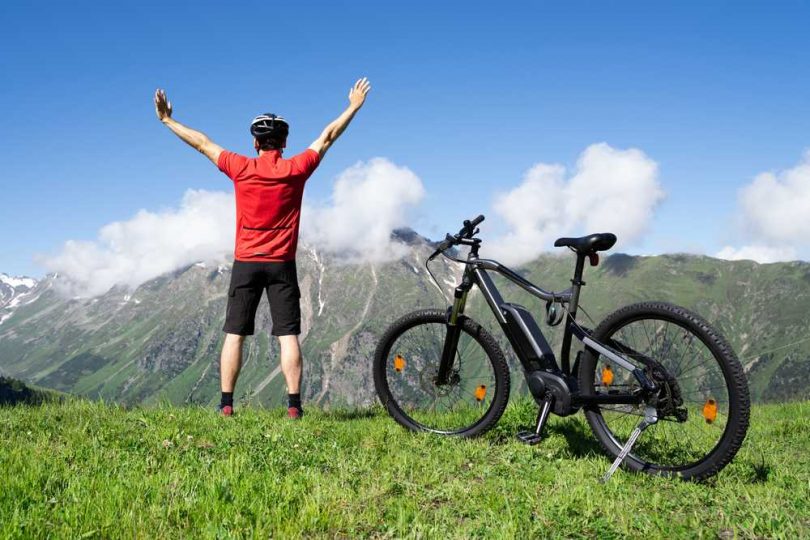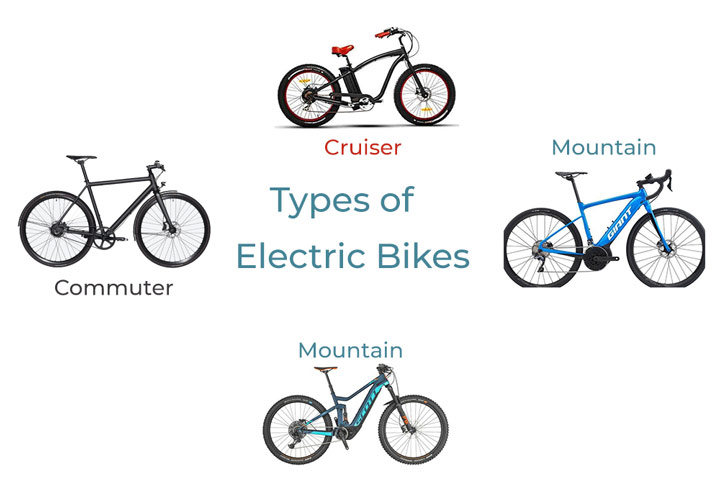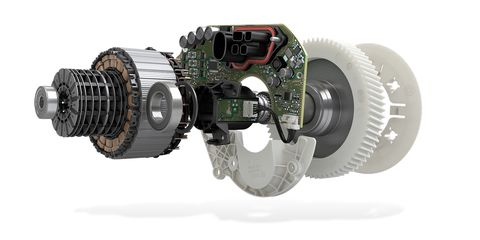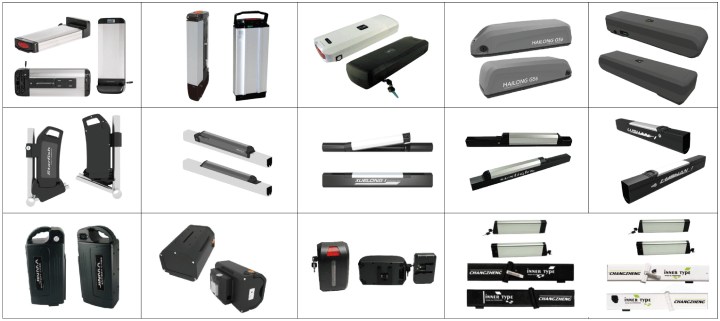Electric bikes are meant to give you an eco-friendly alternative to motorbikes and cars. But you need to find the right type that suits your lifestyle and requirements.
Do you need the e-bike to quickly yet comfortably get to the grocery store or to go around the neighborhood? Or do you go with your buddies on nerve-wrecking bike trails and paths almost every weekend? Will you be riding the bike to the next bus for your daily commute?
To help you make an informed buying decision, we introduced you to different types and classes of electric bikes. We also explained different types of motors and batteries used in e-bikes.
What Are the Different Types of Electric Bikes?
4 Common E-Bikes Styles
1. Cruiser
Cruiser e-bikes were designed primarily to give you control and comfort during any sort of bumpy ride with an upright sitting position. They are perfect for some fun time outdoors.
They come in two different styles – the “Step Through” frame and the classic diamond-shaped. If you have issues lifting your leg due to any physical impairment, you can just simply use the “Step-through” style as your optimum choice.
2. Commuter
Commuter e-bikes are mainly designed to take you far very fast. The best use of a commuter is to go around town or even to get some exercise without letting your heart get popped out of the chest.
These speedy bikes can go a long way with a fantastic speed of 28mph! And the best part about commuters is that you don’t have to worry about traffic jams or get a parking lot space. This is because, with this e-bike, you can very easily weave through any sort of traffic jams or even park anywhere without a problem.
Moreover, with such e-bikes, you’ll even get an attached rack, where you can keep your laptop or bag.
3. Mountain
Designed to ride off-road trails comfortably, they are fun to ride. The position of the battery and the motor gives more stability to your ride and you have better control, especially when going up or cycling down the hilly tracks.
And if you are thinking whether you’ll have a good amount of exercise while riding this style of bike, then ‘YES”.
4. Road
Electric road bikes are loved by so many youngsters. They have that natural feel with the help of hub motors or mid-drive motors (the motor types are explained in the below section).
They will surely give you sweat if you consider them to be exercise equipment. But in my opinion, I would say this type of e-bikes are indeed the best on some excellent training sessions and also to help you reduce joint pains.
Even many people are making road e-bikes as their primary means of working training sessions. So, you should grab one for yourself too!
3 Different Classes of E-Bikes
1. Pedal Assist
This type requires you to move the pedals to use your motor. You can say it’s more like those conventional bicycles, but the only thing that differs is a motor attached that can sense you are pedaling and kicks the engine to help you move.
Pedal-assist bikes may or may not have a throttle while the max speed you can get is 20mph.
2. Throttle
It is designed with a motor that is controlled by using a throttle. In this type of electric bike, you don’t have to pedal to initiate the motor.
Simply when you want your bike to accelerate, crank that throttle, and off you go. But one thing you need to know is the more you throttle your bike, the faster the battery will drain. So try to pedal sometimes.
The max speed you will get is 20mph!
3. Speed Pedelec
This is the class-3 e-bike, and it’s operated by pedal assist with a fantastic speed of 28mph. Despite having such a speed, it’s still considered a bicycle, and you are legally permitted to ride it without the need for a driver’s license or nameplate.
3 Different Types of Motors Used to Power E-bikes
1. Hub Motors (front and rear)
- Direct Drive: best for flat commutes and are exceptionally remarkable for climbing hills (not the steeper ones), exercise, and even for transportation.
- Geared hub: the idle choice for carrying heavy goods or loads and can handle steep hills. Perfect for exercise or commuting. Even the motor pedals are highly effective, especially when your run out of battery.
2. Mid Drive
For the most extended range, these motors are the best you can get. The mid-drive is perfect for applications like speed, hills, commuting, exercise, and many more. Mid-drive motors are very light-weight and also have a better center of gravity, making them very stable when riding.
The only problem is these motors are comparatively more expensive than hub drive. But if you can extend your pockets a bit further, you can surely grab one of these.
3. Friction Motors
Friction motors are comparatively old-fashioned than mid-drive and hub motors. But this low expense can be beneficial if you prefer a modern bike.
The motor’s wheels help spire the tires to move forward. The friction in your motor helps to increase the tire wear. You won’t find such friction drives on any new e-bike since they are less efficient.
2 Different Types of Battery
1. Lead-acid batteries (SLA)
This is comparatively cheaper and easier to recycle. But they don’t last very long and are very sensitive.
Lead-acid might not be a good choice if you are using your bike to commute.
2. Lithium-ion batteries
Li-ion, on the other hand, has become one of the most popular choices among users. Approximately 90% of the market has been taken by these batteries.
The best thing about this battery is it’s comparatively long-lasting and can even generate a considerable amount of power compared to its weight.
Although there are a few downs with this battery, and one of them is it’s pretty expensive compared to lead-acid batteries. But, come on, everything good comes with a price, doesn’t it?
FAQs
1. How fast can I go on an electric bike?
Ans. If you are riding on a class 1 or class 2 electric bike, you would have a maximum speed of 20mph. And if it’s a class 3 electric bike, it would have a peak speed of 28mph.
2. Do I need a license to ride an electric bike on the road?
Ans. The good news is you don’t need any sort of license or nameplate for these bikes. But it’s always advisable to wear helmets when you ride them.
3. How far can I go on one charge?
Ans. For most electric bikes, you would quickly go for 22-50 miles on a single charge on these electric bikes. Although, some high-quality bikes can take you even 80 miles on a single charge.










